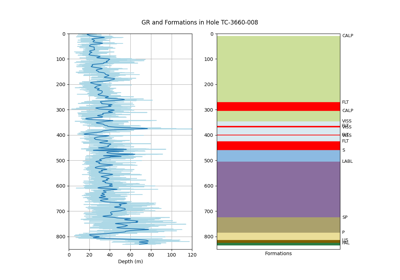Petrophysical Data Integration and Modeling¶
The scarcity and uneven distribution of petrophysical data pose significant challenges in the mining industry, affecting exploration and resource development efforts. This section introduces workflows designed to address these challenges using open-source Python tools for data exploration, integration, and modeling. Through a detailed case study of cores from Collinstown, Ireland, we showcase how these tools enable researchers to work with diverse data types, including legacy datasets and modern petrophysical measurements.
Here’s what you’ll learn:
Exploratory Data Analysis (EDA): Gain insights into the process of integrating and analyzing petrophysical data alongside related datasets such as geochemistry, stratigraphy, and geophysical surveys.
Data Gap Filling: Learn techniques for addressing missing or incomplete data using standard and machine-learning-based approaches.
Practical Application: Explore how these workflows are applied to real-world data to enhance understanding of geological anomalies and support subsurface modeling efforts.
By the end of this section, you’ll understand how to leverage these tools to tackle the challenges of sparse and incomplete data in mining, driving more accurate and informed decision-making.

Modelling and Propagation of Legacy Petrophysical Data for Mining Exploration (1/3)

Modeling and Propagation of Petrophysical Data for Mining Exploration (2/3)

Modelling and Propagation of Legacy Petrophysical Data for Mining Exploration (3/3)
